Kale, the leafy green that seems to be in every health smoothie these days, isn’t just for humans. If you’ve ever found yourself wondering, “Can rabbits eat kale?”—the answer is yes, but in moderation. Rabbit owners are always looking for the best foods to keep their furry friends healthy and happy. As an experienced rabbit care expert, I’m here to guide you through feeding kale to rabbits safely and effectively. In this article, we’ll explore everything you need to know about feeding kale to rabbits, from the benefits to potential risks, and how to serve it safely.
What is Kale?
Kale is a leafy green vegetable that is part of the cabbage family, known scientifically as Brassicaceae. Known for its rich, dark green leaves and high nutrient content, kale has been a popular choice in human diets for centuries due to its health benefits. With its high levels of vitamins and minerals, kale has become a staple superfood. But can this leafy green be good for rabbits too? Let’s look at the details.
Nutritional Value of Kale
Kale is frequently referred to as a superfood for good reason. It contains a variety of important vitamins and minerals, including:
- Vitamin A: Is vital for maintaining eye health and supporting the immune system.
- Vitamin C: An antioxidant that can support the immune system.
- Vitamin K: Is essential for blood clotting and plays a key role in maintaining bone health.
- Calcium: Good for bone strength, but only in moderation.
- Fiber: Helps maintain a healthy digestive system.
These nutrients can help keep your rabbit’s immune system strong and their digestive system working properly. According to the USDA National Nutrient Database, kale contains about 150 mg of calcium per 100 grams, making it necessary to feed kale in moderation to prevent urinary issues.
Is Kale Safe for Rabbits?
The short answer is: yes, kale is generally safe for rabbits. However, like with many foods, moderation is key. Rabbits have sensitive digestive systems, and leafy greens should be added carefully to avoid gastrointestinal issues. So, can bunnies eat kale? Absolutely, but it’s important to manage the portions properly to prevent health problems.
The safety of feeding kale lies in understanding its calcium content. Excessive calcium intake can cause bladder sludge or stones in rabbits, which is why it’s best to feed kale as part of a balanced diet. The House Rabbit Society, a respected source in rabbit care, advises that greens like kale should make up about 10-20% of your rabbit’s diet, ensuring it’s combined with other leafy vegetables to avoid health risks.
Nutritional Benefits of Kale
Benefits of Feeding Kale to Rabbits
1. Boosting Immune System Health
Kale is packed with vitamin C, which can be a great boost for a rabbit’s immune system. Though rabbits synthesize their vitamin C, an extra bit from leafy greens can sometimes help, especially if your rabbit is under stress.
2. Digestive Support
The fiber in kale helps maintain a rabbit’s digestive system. Fiber is crucial for preventing issues like GI stasis, a potentially deadly condition in rabbits where their digestive system slows down or stops. Kale’s fiber content can help promote the healthy movement of food through the digestive tract.
Risks of Feeding Kale to Rabbits
One of the main concerns with kale is its calcium content. When consumed in large quantities, calcium can contribute to the formation of bladder sludge or stones, which may require veterinary intervention. The Merck Veterinary Manual points out that excessive calcium intake in rabbits can lead to urinary issues, making it essential to offer calcium-rich greens sparingly.
So, can rabbits have kale regularly? It’s best to limit kale to occasional servings to avoid overloading calcium. To mitigate these risks, always pair kale with other leafy greens that have lower calcium levels, such as romaine lettuce or cilantro.
How Much Kale Can Rabbits Eat?
When it comes to portion sizes, moderation is key. Rabbits should only be given kale 2-3 times a week, and it should always be part of a mix of different vegetables. A handful of fresh kale, mixed with other leafy greens, is a good portion size for an average-sized rabbit. This ensures they are getting a balanced intake of nutrients without overloading calcium.
Can Rabbits Eat Kale Stems?
Yes, rabbits can eat kale stems, but they can be a bit tough and fibrous. To make it easier for your rabbit to chew, it’s best to chop the stems into small pieces. The stems contain the same nutrients as the leaves, but they are harder to digest, so moderation is key.
Can Rabbits Eat Curly Kale?
Curly kale is a common type of kale that is safe for rabbits to eat. It has thick, frilly leaves, and while it’s nutritious, it should still be fed in moderation. Always ensure curly kale is fresh and washed thoroughly before serving it to your rabbit.
Can Rabbits Eat Red Kale?
Red kale is another variety of kale that rabbits can safely enjoy. It contains similar nutrients as green kale and adds a bit of variety to their diet. Just like with other types of kale, feed red kale in moderation and as part of a balanced mix of vegetables.
Which Type of Kale is Best for Rabbits?
There are a few different varieties of kale, including curly kale, lacinato kale (also known as dinosaur kale), and red Russian kale. Any of these varieties is generally safe for rabbits, but curly kale is often the most accessible. Just make sure it’s fresh and organic if possible, to avoid pesticide residues.
How to Prepare Kale for Rabbits
Before feeding kale to your rabbit, it’s important to prepare it properly:
1. Washing and Cleaning
Always wash kale thoroughly to remove any dirt or pesticides. Even if the label says it’s organic, it’s a good idea to rinse it under running water.
2. Serving Methods
Serve kale fresh and raw. Avoid cooking kale for your rabbit, as rabbits are designed to eat raw foods, and cooked vegetables can upset their digestive systems.
Can Baby Rabbits Eat Kale?
It’s best to avoid feeding kale to baby rabbits. Young rabbits have sensitive digestive systems and require a diet mainly consisting of their mother’s milk, followed by alfalfa hay and pellets. Once a rabbit reaches around 12 weeks of age, you can start introducing leafy greens like kale gradually.
Symptoms of Kale Overconsumption
If your rabbit consumes too much kale, they might show symptoms like:
- Soft or mushy stools
- Decreased appetite
- Signs of discomfort or pain
If you notice any of these symptoms, remove kale from your diet and consult a veterinarian if symptoms persist.
What Else Can Rabbits Eat?
In addition to kale, rabbits can enjoy a variety of leafy greens and vegetables, such as:
- Romaine lettuce: A great everyday leafy green.
- Arugula: Mild and nutrient-rich.
- Bok choy: Offers a different taste and texture, good for variety.
These alternatives are lower in calcium and still provide plenty of nutrients to keep your rabbit healthy.
Combining Kale with Other Vegetables
To ensure your rabbit is getting a balanced diet, always combine kale with other vegetables like:
- Cilantro: Adds variety without too much calcium.
- Basil: Another herb that provides flavor and nutrients.
- Dandelion greens: A natural and nutritious option for rabbits.
For additional insight on different vegetables, visit:
Can Rabbits Eat Celery
Can Rabbits Eat Spinach
Can Rabbits Eat Broccoli
Can Rabbits Eat Carrots?
Can Rabbits Eat Cucumbers
Alternatives to Kale for Rabbits
If kale doesn’t work well for your rabbit or if you want to provide more variety, consider these alternatives:
- Romaine lettuce: Lower in calcium, safe for regular consumption.
- Parsley: Rich in vitamins, but also to be fed in moderation.
- Mint: Provides freshness and a different texture.
For additional insight on different vegetables, visit:
Can Rabbits Have Strawberries?
Can Rabbits Have Blueberries?
Can Rabbits Have Apples?
Can Rabbits Eat Grapes?
Kale vs. Other Leafy Greens
Kale vs. Spinach: Like kale, spinach has high calcium and oxalates, making it an occasional treat rather than a staple.
Kale vs. Romaine Lettuce: Romaine lettuce is much lower in calcium compared to kale, making it suitable for daily feeding.
Tips for Feeding Vegetables to Rabbits
- Introduce New Foods Slowly: Start with a small piece of kale to see if your rabbit likes it and to monitor for any digestive upset.
- Ensure Variety: Avoid feeding just one type of vegetable. A mix of leafy greens ensures your rabbit gets a well-rounded diet.
- Monitor for Reactions: Watch for changes in stool consistency or behavior, as these can indicate an issue with a particular food.
Conclusion
So, can rabbits eat kale? Absolutely, but always in moderation. Kale can be a nutritious addition to your rabbit’s diet, packed with vitamins and fiber. However, due to its high calcium content, it should be offered alongside other leafy greens to avoid potential health issues. By following these guidelines, you can provide a balanced diet that keeps your rabbit happy and healthy.
FAQs
- What leafy greens can rabbits eat?
Rabbits can safely eat leafy greens like romaine lettuce, cilantro, parsley, and dandelion greens. Gradually introduce new greens to prevent digestive problems. - Can rabbits eat kale and cabbage?
Yes, rabbits can eat both kale and cabbage, but in moderation due to their high calcium content. It’s best to mix these with other greens for a balanced diet. - What vegetables should rabbits not eat?
Avoid feeding rabbits starchy vegetables like potatoes, onions, and corn, as well as iceberg lettuce, which can cause digestive upset. Stick with safe leafy greens and herbs. - Can rabbits have kale and spinach?
Rabbits can eat both kale and spinach, but they should be offered sparingly. Both are high in calcium and oxalates, which can lead to health issues if overconsumed. - Can rabbits eat raw kale?
Yes, rabbits can eat raw kale. It’s a nutritious option, but remember to serve it in moderation to avoid potential calcium-related health problems.

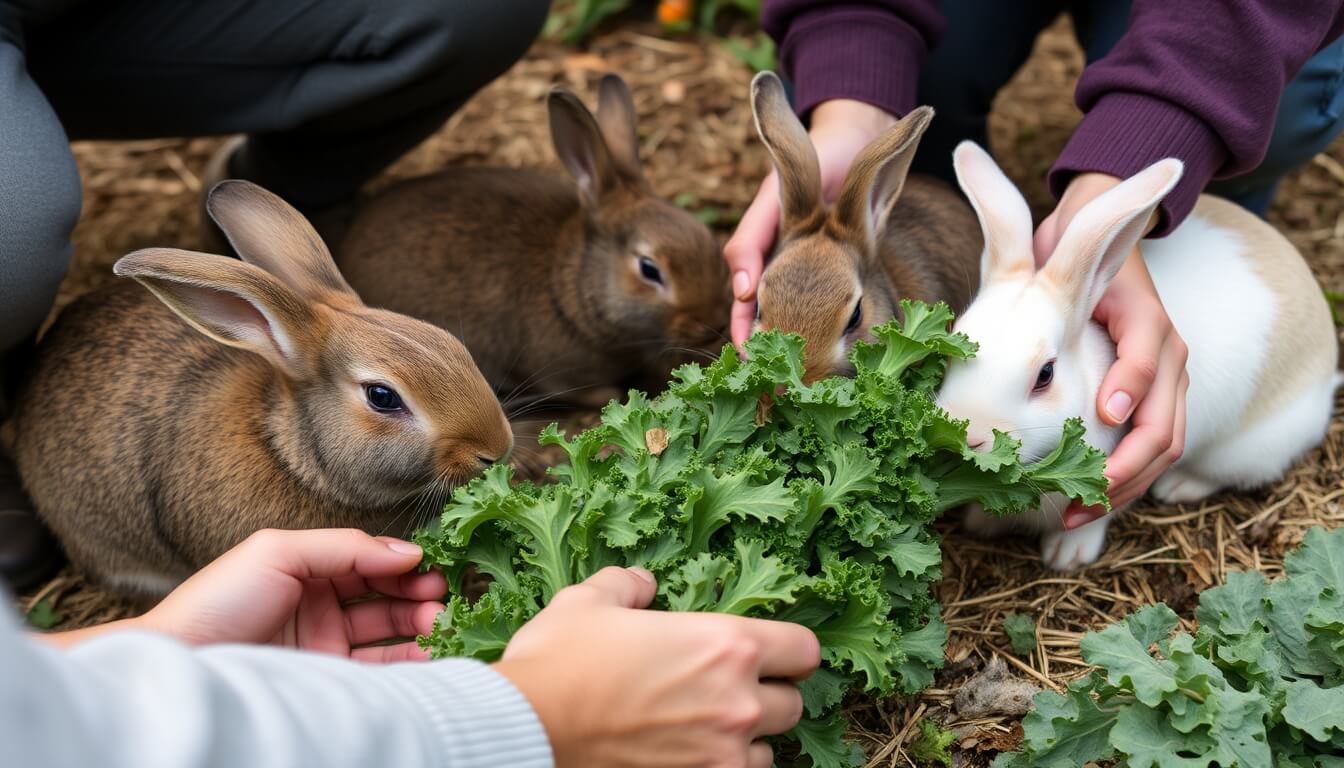
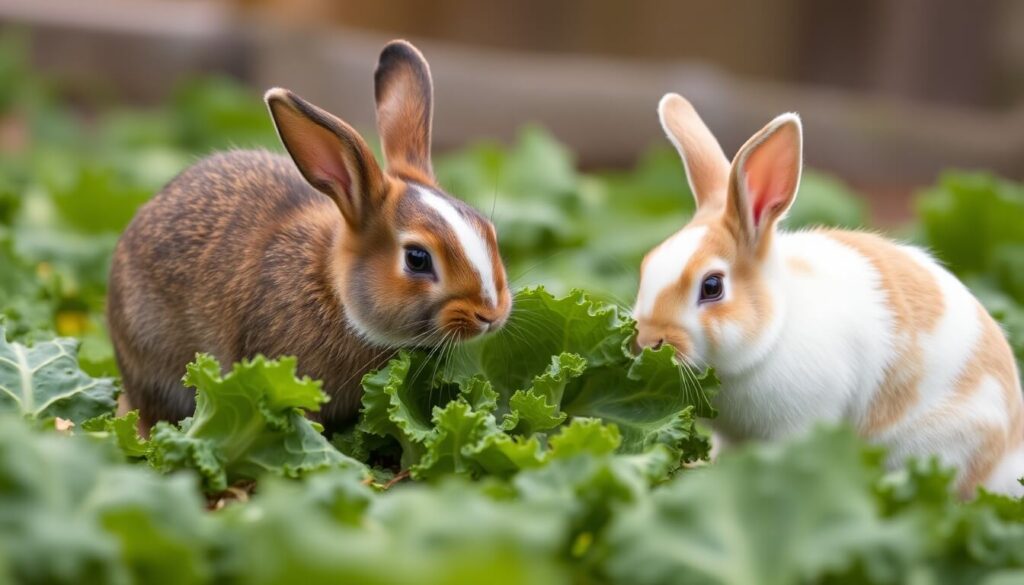

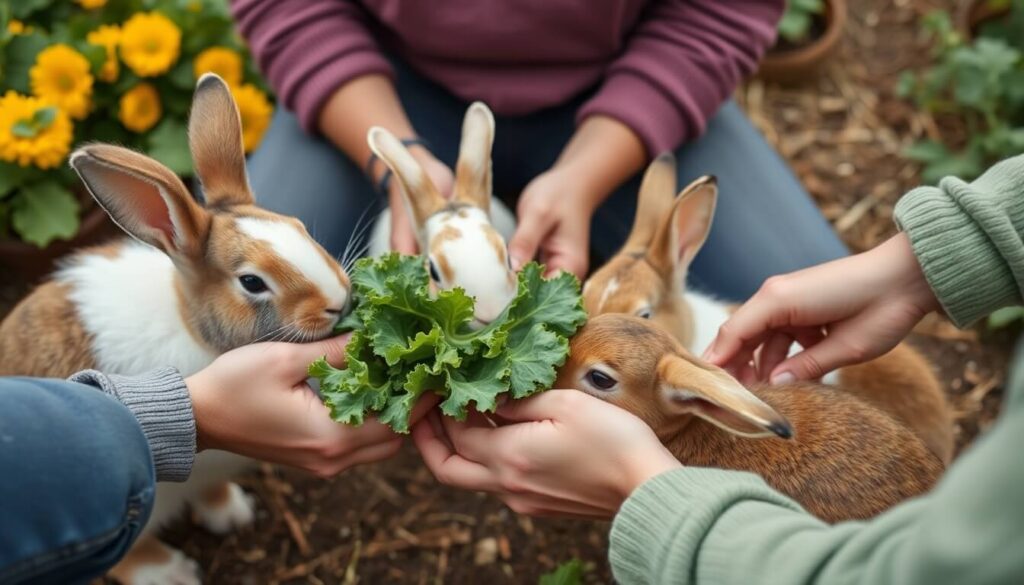
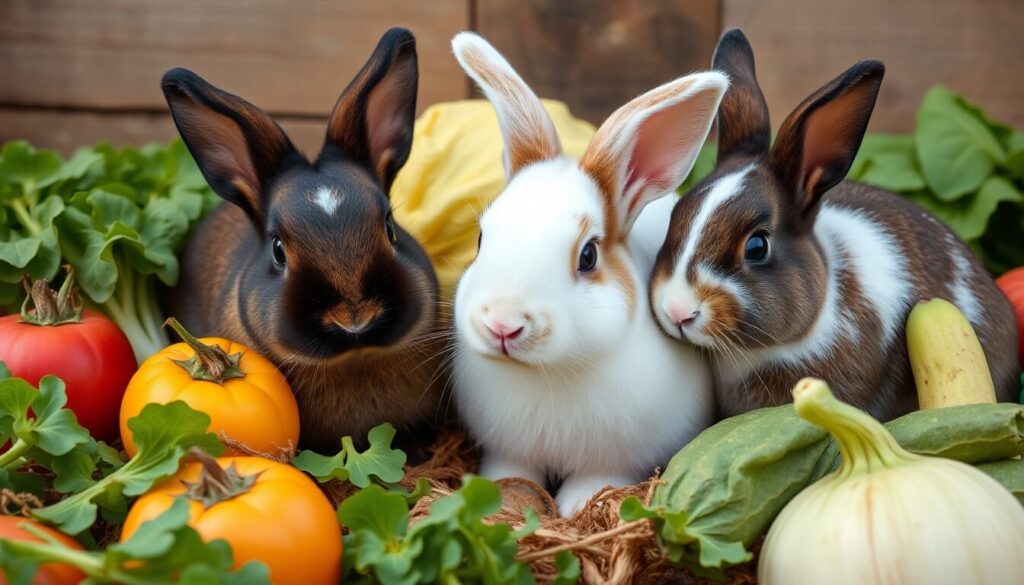
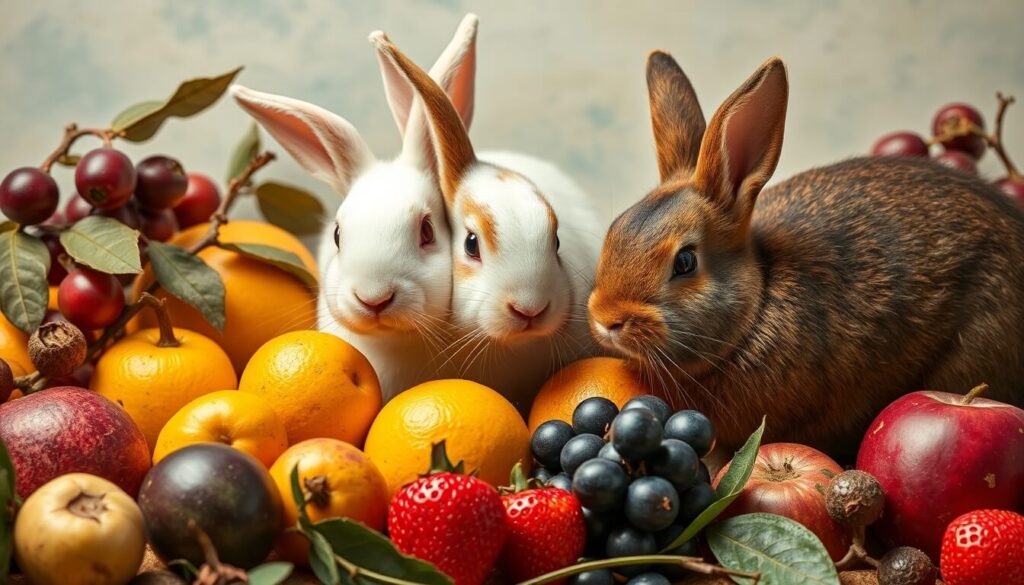
Leave a Reply